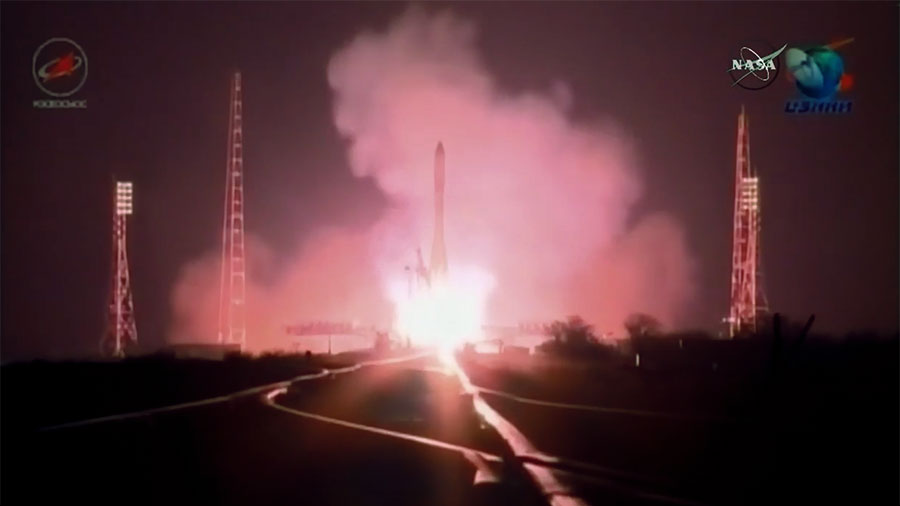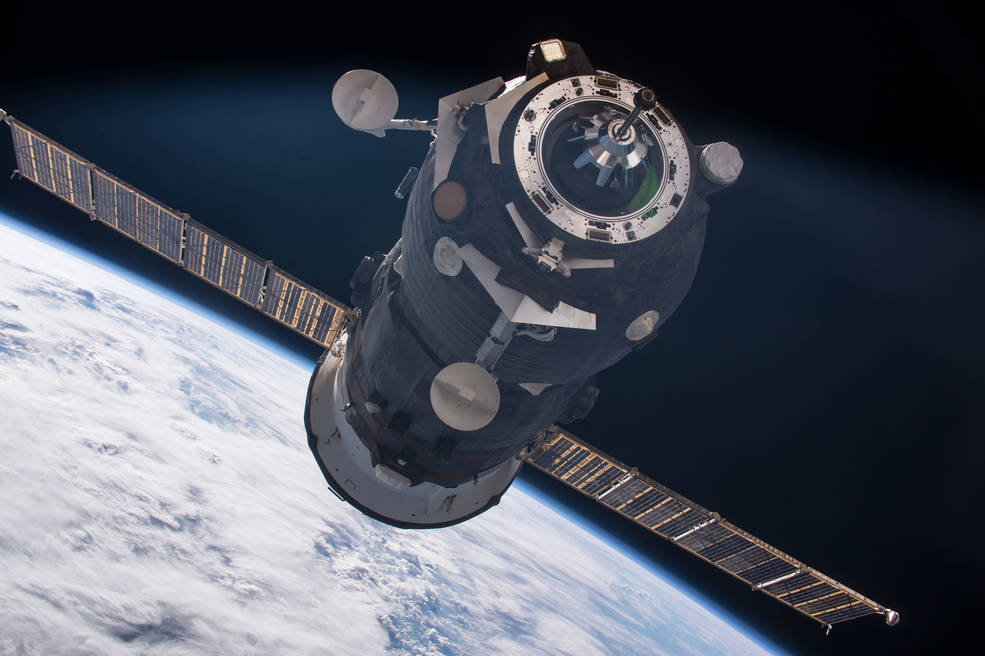
The Progress 65 cargo spaceship launched on time Thursday morning, Dec. 1, 2016 from the Baikonur Cosmodrome in Kazakhstan but failed to reach orbit minutes later. Credit: NASA TV
KENNEDY SPACE CENTER, FL - An unmanned Russian Progress resupply ship bound for the International Space Station (ISS) was lost shortly after launch from the Baikonur Cosmodrome in Kazakhstan on Thursday when its Soyuz booster suffered a catastrophic anomaly.
The Russian launch failure deals somewhat of a setback to the ever ongoing efforts by all the space station partners to keep the orbiting outpost well stocked with critical supplies of food and provisions for the multinational six person crew and science experiments to carry out the research activities for which the station was assembled.
The Soyuz rocket failed in flight around six and a half minutes after what had been an otherwise flawless nighttime liftoff from the Baikonur Cosmodrome at 9:51 a.m. EST (8:51 p.m. Baikonur time), Thursday, Dec. 1.
"The Russian space agency Roscosmos has confirmed a Progress cargo resupply spacecraft bound for the International Space Station and her six person crew has lost shortly after launch," said NASA.
Per protocol, the Russian space agency Roscosmos has formed a state commission to investigate the accident, seek out the root cause and implement measures to prevent such failures in the future.
"The first few minutes of flight were normal, but Russian flight controllers reported telemetry data indicating a problem during third stage operation. The Russians have formed a State Commission and are the source for details on the specific failure cause."
Despite the failure there was no immediate impact on the current Expedition 50 crew and life goes on.
"The spacecraft was not carrying any supplies critical for the United States Operating Segment (USOS) of the station," NASA reported.
However the continued useful utilization of the million pound station is totally dependent on receiving a steady train of supplies from Earth - comprising Russian, US and Japanese cargo freighters launching multiple times per year.
The Progress 65 cargo freighter was jam packed with 2.6 tons of food, fuel, and supplies for the space station crew, including approximately 1,400 pounds of propellant, 112 pounds of oxygen, 925 pounds of water, and 2,750 pounds of spare parts, supplies and scientific experiment hardware.

The Russian Progress 62 spacecraft approaches the International Space Station on July 1, 2016. Credits: NASA
The Progress was carrying a few items from NASA but they are all replaceable, says NASA. The US items packed on board included spare parts for the station's environmental control and life support system, research hardware, crew supplies and crew clothing.
Stay tuned here for Ken's continuing Earth and Planetary science and human spaceflight news.
Ken Kremer














